Rossio square forms the bustling heart of downtown Lisbon. Several parts of the city converge here and the square is a popular meeting place. If you stay in Lisbon, even for a short time, chances are you’ll pass here more than once.
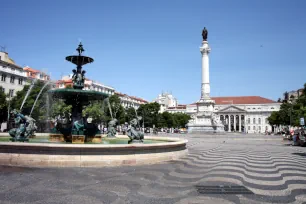
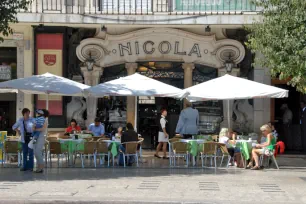
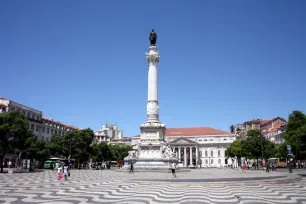
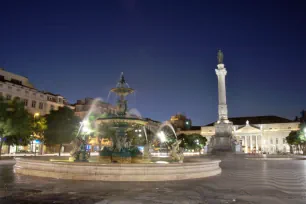
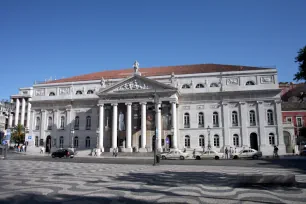
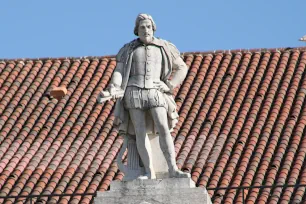
Officially named Praça Dom Pedro IV, this square has been known as Rossio (meaning ‘large public square’) since its creation in the Middle Ages, and it is still commonly referred to as such. Rossio the most lively square in the city, and it is lined with bustling cafés and shops.
Two of the city’s most famous cafés can be found here: the Café Nicola, at the Rossio since the eighteenth century, and Café Suiça, popular for its outdoor terrace.
Taxis, cars and buses circle the pedestrianized center of the square, which has been paved with a black and white wavy pattern since the mid-nineteenth century. It is adorned with a tall monument and two fountains. Rossio is a popular gathering place and people meet at one of the many benches or at the pedestal of the central monument.
Monument to Pedro IV
A twenty-three-meter tall column with a statue of Dom Pedro IV graces the center of the square. Pedro IV, after whom the square is officially named, was king of Portugal and the first emperor of Brazil.
According to a persistent rumor, the bronze statue was meant to portray emperor Maximilian of Mexico, however this is disputed by historians. At the foot of the column, which was installed here in 1870, are allegorical statues representing Justice, Courage, Restraint and Wisdom.
Fountains
In 1889 two monumental Baroque fountains were installed on either side of the Monument to Pedro IV. The two identical fountains were originally cast at the foundry in Val d’Osne, France. The sculptures embellishing the fountains – created by the French sculptors Mathurin Moreau and Michel Lienard – depict mythical figures. The fountains are especially beautiful at night when they are illuminated.
National Theater
The most prominent building bordering Rossio is the Teatro Nacional Dona Maria II. The majestic edifice was erected in the mid-nineteenth century after a neoclassical design by the Italian architect Fortunato Lodi. The theater stands at the site of the fifteenth-century Estaus Palace. The palace gained notoriety when the Inquisition set up their court here. These religious zealots had many so-called heretics burned at the stake in front of the palace.
A fire destroyed the theater’s interior in 1964, and it wasn’t until 1978 before the theater reopened to the public.
The building’s exterior is defined by its monumental neoclassical portico. Six massive Ionic columns support the pediment, which is decorated with sculptures depicting Apollo and his muses. Atop the pediment is a statue of Gil Vicente, a fifteenth-century playwright who is considered the founder of Portuguese theater.
Rossio Station
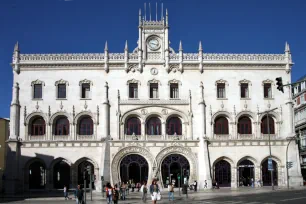
Near the National Theater, towards the Praça dos Restauradores, is another beautiful building: the Rossio Station. It was built in 1887 as Lisbon’s central railway station, and today trains for Sintra depart here.
The railway station has a magnificent facade in the Neo-Manueline architecture style (a Portuguese variant of the Late Gothic style), typified by elaborately sculpted motifs. Note the unique horseshoe shaped entrances.

